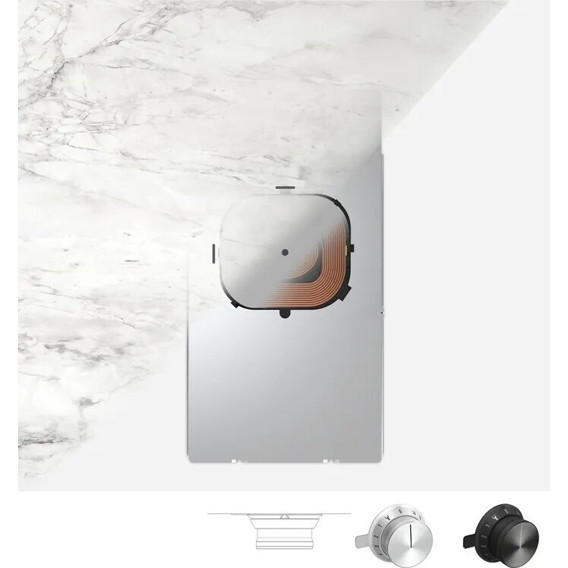20 Questions You Should ASK ABOUT Self-contained Induction Hob Test Before Buying It

Self-Contained Induction Hob Test: A Comprehensive Overview
Introduction
As the cooking world develops, so does the technology behind cooking home appliances. Amongst the significant developments, induction hobs have emerged as a frontrunner in energy-efficient cooking solutions. This blog post dives into the complexities of self-contained induction hobs, discussing their features, advantages, typical mistaken beliefs, and comprehensive testing approach.
Comprehending Self-Contained Induction Hobs
What Is an Induction Hob?
An induction hob is a cooking surface area that utilizes electromagnetic induction to straight heat pots and pans. Unlike standard gas or electrical cooktops, which rely on heating elements or flames, induction cooking warms the pots and pans itself, significantly improving effectiveness and control over cooking temperature levels.
Self-Contained Induction Hobs
A self-contained induction hob is a standalone unit that integrates the cooking surface area and the essential electrical components in one compact gadget. These hobs are ideal for little cooking areas, camping journeys, or for those who want versatility in cooking spaces.
Secret Features of Self-Contained Induction Hobs
- Safety: Induction hobs stay cool to the touch, lowering the danger of burns.
- Energy Efficiency: Approximately 90% of energy is directed to the pots and pans, minimizing waste.
- Temperature Control: Fine-tuning heat settings is much faster and more accurate compared to standard approaches.
- Easy to Clean: The flat surface is simple to clean down, and spills do not burn onto the surface.
- Mobility: Many self-contained units are lightweight and compact, making them easy to transportation.
Advantages of Using Self-Contained Induction Hobs
| Benefit | Description |
|---|---|
| Quick Cooking | Rapid heating decreases cooking times substantially. |
| Environmental Impact | Lower energy usage equates to a smaller carbon footprint. |
| Very Little Heat Loss | Less ambient heat keeps cooking areas cooler, specifically in summertime. |
| Flexibility | Can be used for numerous applications including but not limited to indoor and outside cooking. |
| User-Friendly | User-friendly controls make them accessible for cooks of all levels. |
Testing Self-Contained Induction Hobs
Evaluating an induction hob needs a systematic method to assess its performance, effectiveness, and security. The following criteria form the basis for an extensive examination.
Checking Methodology
Table 1: Performance Testing Criteria
| Requirement | Description |
|---|---|
| Heating Time | Measure time required to boil water or reach desired temperature. |
| Temperature level Control | Analyze the accuracy and responsiveness of temperature settings. |
| Energy Consumption | Monitor energy usage throughout the cooking duration. |
| Security Features | Assess automatic shut-off, surface area temperature, and security lock mechanisms. |
| Ease of Use | Evaluate the interface, control layout, and direction clarity. |
| Portability | Check the weight and general ease of motion. |
Checking Process
Heating Time
- Start by filling a standard pot with a particular volume of water (e.g., 1 liter).
- Record the time required to reach a rolling boil.
- Repeat the test under numerous settings to evaluate consistency.
Temperature Control
- Set the induction hob to numerous temperature level levels (e.g., low, medium, high).
- Utilize an infrared thermometer to verify the temperature level precision of the cooking surface area and cookware.
Energy Consumption
- Utilize a power meter to track energy use throughout cooking.
- Compare this information against standard cooking approaches, if applicable.
Security Features
- Test the automated shut-off feature by turning off the hob during usage.
- Assess the surface area temperature after cooking to guarantee very little burns.
Reduce of Use
- Get involved in a user test, involving beginner and experienced cooks, to get feedback on control usability and clarity.
Portability
- Evaluate the hob for weight, size, and the efficiency of functions like cord storage for simple transport.
Analysis of Results
After conducting the tests, put together the data into a detailed report that summarizes the findings.
Table 2: Summary of Test Results
| Function | Findings |
|---|---|
| Heating Time | 1 liter of water boiled in 4 minutes at optimum setting. |
| Temperature Control | ± 1 ° C discrepancy from set temperature reported. |
| Energy Consumption | 1500 W average use throughout peak cooking. |
| Safety Features | Automatic shut-off triggered after 10 minutes of inactivity. |
| Reduce of Use | 90% of users discovered controls user-friendly and useful. |
| Portability | Weighs 4 kg, compact dimensions of 60 cm x 40 cm. |
Frequently Asked Questions About Self-Contained Induction Hobs
Q: Are all cookware types suitable with induction hobs?
- A: No, cookware needs to be ferrous (magnetic). Stainless-steel and cast iron are normally suitable, while glass, ceramic, and aluminum without a magnetic base are not.
Q: Can induction hobs be used outdoors?
- A: Yes, provided there's access to an appropriate power source. Many portable designs are created for outdoor usage.
Q: Are self-contained induction hobs energy efficient?
- A: Yes, induction hobs are more energy-efficient than other cooking techniques, using nearly 90% of the energy generated effectively.
Q: What maintenance is needed for induction hobs?
- A: Regularly tidy the surface area after use to avoid spots and scratches. Prevent abrasive cleaners.
Q: Do induction hobs make sounds?
- A: Some might produce a small buzzing sound when in usage, which is normal and might differ based on the cooker's power settings.
Self-contained induction hobs represent a substantial advancement in cooking innovation, offering safe, effective, and convenient cooking options. Through organized Geschirrspüler Mit Zeolith Trocknung and assessment, these flexible home appliances can meet the needs of contemporary cooking practices. As technology continues to advance, the benefits of induction cooking are vast, affecting sustainability and improving the general cooking experience.

